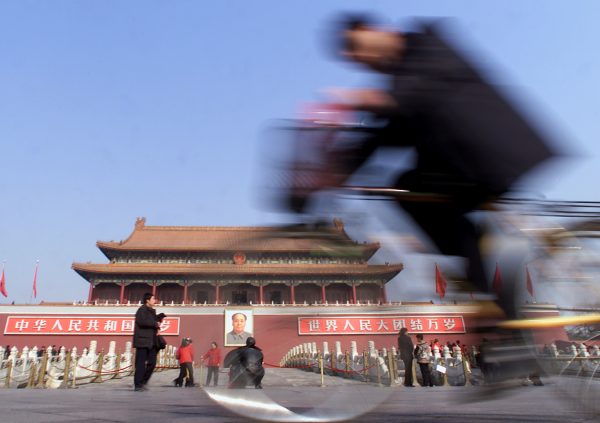Yet, we seem to have come full circle back to the state of affairs that rendered Nixon’s historic visit to the People’s Republic of China so dramatic in the first place. Today, despite more than 40 years of diplomatic ties, China–US distrust is sufficiently high that we expect many points of contention to evolve into crises. Each side pays close attention to the capabilities and intentions of the other and the Taiwan issue remains a major source of discord.
Two strategic questions underpinning Nixon’s radical shift on China policy remain.
First, how to cope with China? By the end of the 1960s, after 20 years of trying, many in the United States knew it was impossible ignore the most populous nation on earth and one-half of the Communist axis driving the Cold War. But which was preferable: a powerful or a weak China?
Nixon’s opening was premised upon the idea that a weak and isolated China was dangerous because it lashed out and incited revolutions elsewhere. But the subsequent buffering that the United States provided to facilitate Chinese security against the USSR in the short-term and China’s economic reforms and ascendance in the medium-term brings us back to those earlier, contentious debates about how a powerful — and therefore threatening — China should be countered or contained.
Second, how to situate China policy within its wider context, especially great power competition? Nixon and his national security adviser Henry Kissinger were preoccupied with manipulating the US–Soviet Union-China ‘strategic triangle’ to maximise US leverage. After the Cold War, the United States grew accustomed to thinking about China policy bilaterally. Yet, current worries over China’s support for Russia’s campaign in Ukraine reminds us about the wider context. Strategic triangles pivot upon one common adversary — in this renewed triangle today, will that be the United States or Russia? China is once again the ‘swing voter’ that Washington and Moscow may vie over.
During these times of transition and uncertainty, Nixon’s China trip helps us to think through a crucial question: how does radical policy change occur? How did the United States shift from confronting China as its worst enemy to treating its communist leaders as equals and tacit allies? There were four necessary conditions.
Prior competing ideas and policy debates provided the ideational resources for later changes. In conceiving and justifying the opening to China, Nixon drew in different ways from 1960s debates and revisionist ideas for changing China policy within US foreign policy and intelligence communities. Those disagreements and often combative policy positions constituted a significant storehouse of well-argued and refined policy ideas and recommendations for reconciling with China when the time came.
The other side had to be ready for radical change as well. Earlier US efforts to relax China policy during the Johnson administration went nowhere for the simple reason that the Chinese leadership did not respond. But the Soviet invasion of Czechoslovakia and the 1969 Sino–Soviet border war convinced them that the bigger threat was the Soviet Union. Chairman Mao Zedong and Premier Zhou Enlai were ready to reach out to the United States and would have done so even if it were not Nixon in power.
Big geopolitical changes were afoot, and the two sides’ preferred policy options converged. The divorce between the Soviet Union and China fundamentally divided the Communist opposition, and both Mao and Nixon chose to react to these changes by ending their mutual alienation and leveraging triangular politics. It was a choice, not an automatic response. The other policy options considered by US officials in response to the Sino–Soviet split were to stand by and let them fight it out, or to take either the Soviet or the Chinese side against the other.
Finally, Nixon and Kissinger determined how the opening to China was effected. Initially, their conception of triangular relations entailed the United States simultaneously relaxing tensions with both Moscow and Beijing. They were playmakers in managing to negotiate mutually acceptable terms for reconciliation with China, including Taiwan’s status and US commitments to the island.
Kissinger was also a game-changer. In emphasising the common threat of the Soviet Union, he took the new relationship with China further towards a tacit alliance than even the Chinese leaders were comfortable with. By 1973, he offered Zhou a US hotline early-warning system (which would have provided Beijing with intelligence about Soviet military action directed against China), the sale of superior high-resolution satellite images to help Chinese targeting on Soviet sites, and in the event of a Sino–Soviet war, covert aid for Chinese military communications. Zhou politely declined, but such cooperation was achieved in the late 1970s under different leaders.
As we approach the thorny problems that will dog China policy for decades to come, it is worth asking whether ours is a system which allows room for different ideas and policy options to be developed and debated. Are we alert to important shifts in the other sides’ perceptions and imperatives? How do we scan the horizon for significant and unexpected changes in the geopolitical landscape? Are we nurturing creative thinkers and doers who can make play and change games?
Evelyn Goh is the Shedden Professor of Strategic Policy Studies at The Australian National University. She is the author of Constructing the US Rapprochement with China, 1961-1974 (Cambridge, 2004).

